Which vegetables grow on the balcony, in the raised bed, etc. in winter? When should you plant winter vegetables? We reveal everything you need to know about growing winter vegetables in the garden.
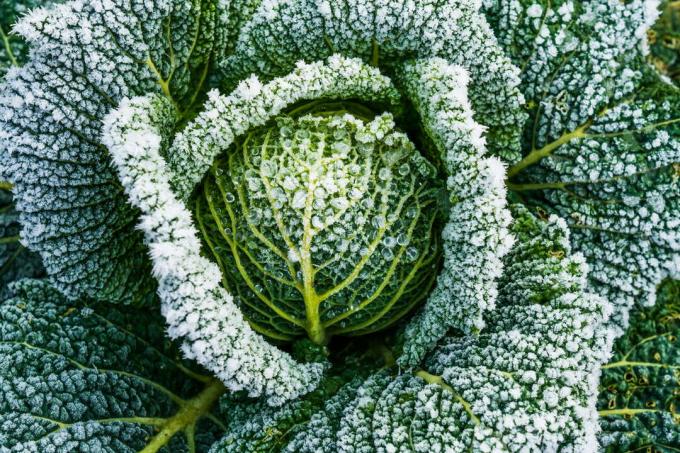
In winter, many vegetable beds that were lovingly cared for in summer are abandoned. The reason: Many gardeners believe that you can not grow vegetables in winter. In reality, many types of vegetables can also be cultivated in winter without any problems. If you grow winter vegetables, you can look forward to fresh ingredients in the kitchen all year round and make optimal use of your garden even in the cold season. Above all, the right choice of varieties, but also a few simple tips and tricks ensure delicious supplies of healthy vegetables in winter. Here you can find out what you need to consider when growing in winter.
contents
- Growing Winter Vegetables: Which Vegetables Grow In Winter?
- When to plant winter vegetables
- Crop rotation in winter vegetable cultivation
- Growing winter vegetables: How to extend the season
- Harvest winter vegetables
Growing Winter Vegetables: Which Vegetables Grow In Winter?
Of course, not all vegetables are suitable for winter cultivation – especially sun-loving species such as tomatoes (Solanum lycopersicum) or zucchini (Cucurbita pepo var. giromontiina) can hardly be used in winter without a heated greenhouse and complex lighting systems. Fortunately, there are also a number of plants that are frost hardy and can therefore survive the winter in the garden. Winter vegetable cultivation is not as difficult as you might think: if you know which vegetables also grow in winter, planting turns out to be easier than you think. Overall, the various winter vegetables are roughly divided into three categories: Fast, medium and slow-growing varieties.
Because of their forest hardiness, some fast-growing vegetables are well suited for cultivation into the winter. Although they also stop growing when the temperatures are too cold, this is because of their rapid growth They can develop with a sowing in late summer or early autumn already ready for the winter be harvest. Fast-growing vegetables like arugula (Eruca vesicaria ssp. sativa), Lamb's lettuce (Valerianella locusta), endive (Cichorium endivia) or chicory (Cichorium intybus var. foliosum), but also spinach (Spinacia oleracea) and Pak choi (Brassica rapa subsp. chinensis) remain on the bed throughout the winter and can be harvested as needed. If the temperatures allow it, they may even grow a little further.
Medium-growing varieties include radish (Raphanus sativus var. sativus), various beets and Kale (Brassica oleracea var. sabellica), Kohlrabi (Brassica oleracea var. gongylodes), chard (Beta vulgaris subsp. vulgaris) and leek (Allium porrum). Once planted, this winter vegetable takes an average of 55 to 70 days to mature.
On the other hand, they are the slowest Beetroot (Beta vulgaris), Brussels sprouts (Brassica oleracea var. gemifera), carrots (Daucus carota subsp. sativus), onions (Allium cepa) and parsnips (Pastinaca sativa), because with them one assumes 100 days between sowing and harvest. For this reason, you should plan early enough if you want to grow vegetables in winter.
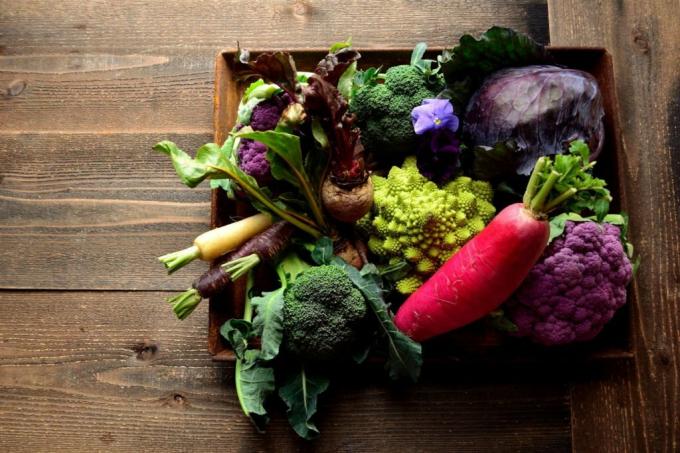
When to plant winter vegetables
The correct date for planting winter vegetables depends primarily on the date of the first frost. This can vary greatly depending on the region - the first frost in southern Germany will be mid to Expected at the end of September, while in northern Germany frosts often only begin in early to mid-October appear. Hobby gardeners can easily determine the probability of frost in their region German Weather Service read to prepare for winter. Fast growing vegetables should be sown at least a month and a half before the first frost, medium fast growing two and a half months and slow growing even three and a half months before the first frost. If you start planting the winter vegetables too late, they will not reach their desired size because the plants stop growing at low temperatures. In the worst case, the planted winter vegetables can even die because the young plants do not yet have the necessary winter hardiness. When cultivating, it is therefore always important to ensure that the sowing of the plants begins at an early stage.
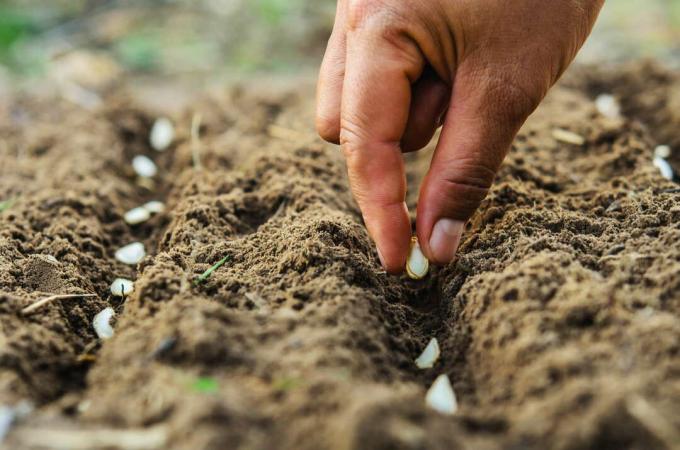
Crop rotation in winter vegetable cultivation
Many winter vegetables are not planted until the summer vegetables are in the pot. It is therefore particularly important to pay more attention to the crop rotation in your own beds. For example, no botanical relatives should move into the same bed one after the other - in the worst case In this way diseases can pass from the previous plants to their still healthy successors and spread. But you should also consider the nutrient requirements of the plant: After a heavy feeder, it becomes a heavy feeder again sown, the second plant usually not only has too few nutrients and grows weakly, but also the soil suffers and drains. Therefore, the crop rotation for winter vegetable cultivation needs to be well planned.
tip: Incidentally, winter is also an excellent time to do something good for your bed. winter vetch (Vicia villosa) or red clover (Trifolium pratense) can, for example, in September as green manure be sown and accumulates valuable nitrogen in the soil over the winter.
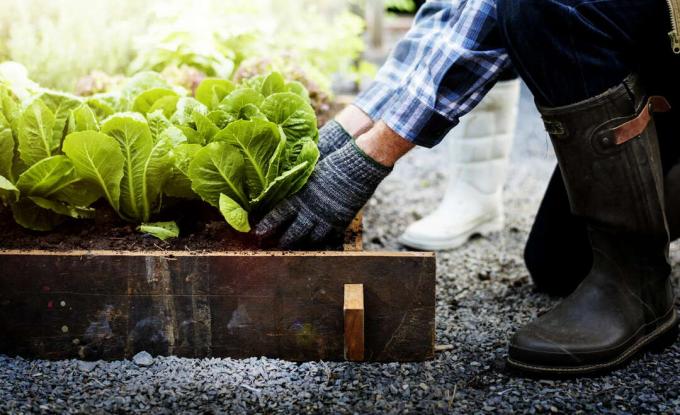
Growing winter vegetables: How to extend the season
As temperatures drop, many plants begin to grow significantly more slowly or even stop growing altogether. To ensure that the winter vegetables are as large as possible, you can extend the gardening season with a few tricks. If you mulch the bed with straw, leaves or pine needles, for example, the roots of the plants stay warm longer and growth can be extended. One is even better Raised bed in winter: Due to the rotting processes inside, the bed emits heat and thus functions as a natural heater. For example, winter vegetables that are grown in raised beds can often grow longer than vegetables that are grown in classic beds. You can also install a cold frame attachment on the raised bed - this way the heat stays in the bed and the plants can grow much longer. Only regular airing on sunny days should not be forgotten. how to get one Build your own cold frame can be found in our special article.
The greenhouse does not have to remain unused in winter either - many salads, but also spinach grow in the shelter of the Greenhouse better, after all, the greenhouse effect occurs here on sunny days and the air becomes significantly warmer than outside.

If you want to grow vegetables on the balcony in winter, the right insulation is the be-all and end-all. If the soil in the pots freezes completely, even many hardy plants cannot stand it. With good insulation (e.g. Styrofoam plates around the bucket, a jute bag filled with leaves or a coconut mat) protects the roots of the plants and nothing stands in the way of cultivation in the way.
Harvest winter vegetables
Many winter vegetables can be harvested almost all winter long. Kale, spinach and co. tolerate the cold surprisingly well. Many winter lettuce also survive the frost and can even freeze completely and thaw again without suffering major damage. In fact, many even claim that cabbage varieties in particular taste milder and better after the first frost - so it's worth the wait.
However, one thing should be considered when growing winter vegetables: none of the vegetables should be harvested during frost. Otherwise, the vegetables can be damaged and become mushy and unsightly after defrosting. It is better to wait for sunny, frost-free days to enjoy the fresh vegetables.
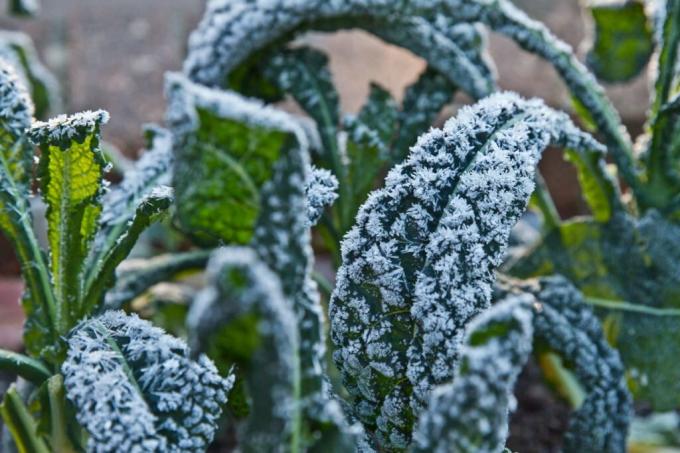
tip: A suitable substrate is important for successful vegetable cultivation. We recommend a nutrient-rich and peat-free organic soil like ours Plantura organic tomato & vegetable soil.
You can not only grow something in the garden in winter - you can find out how to use the raised bed sensibly in our article "Raised bed in winter“.



